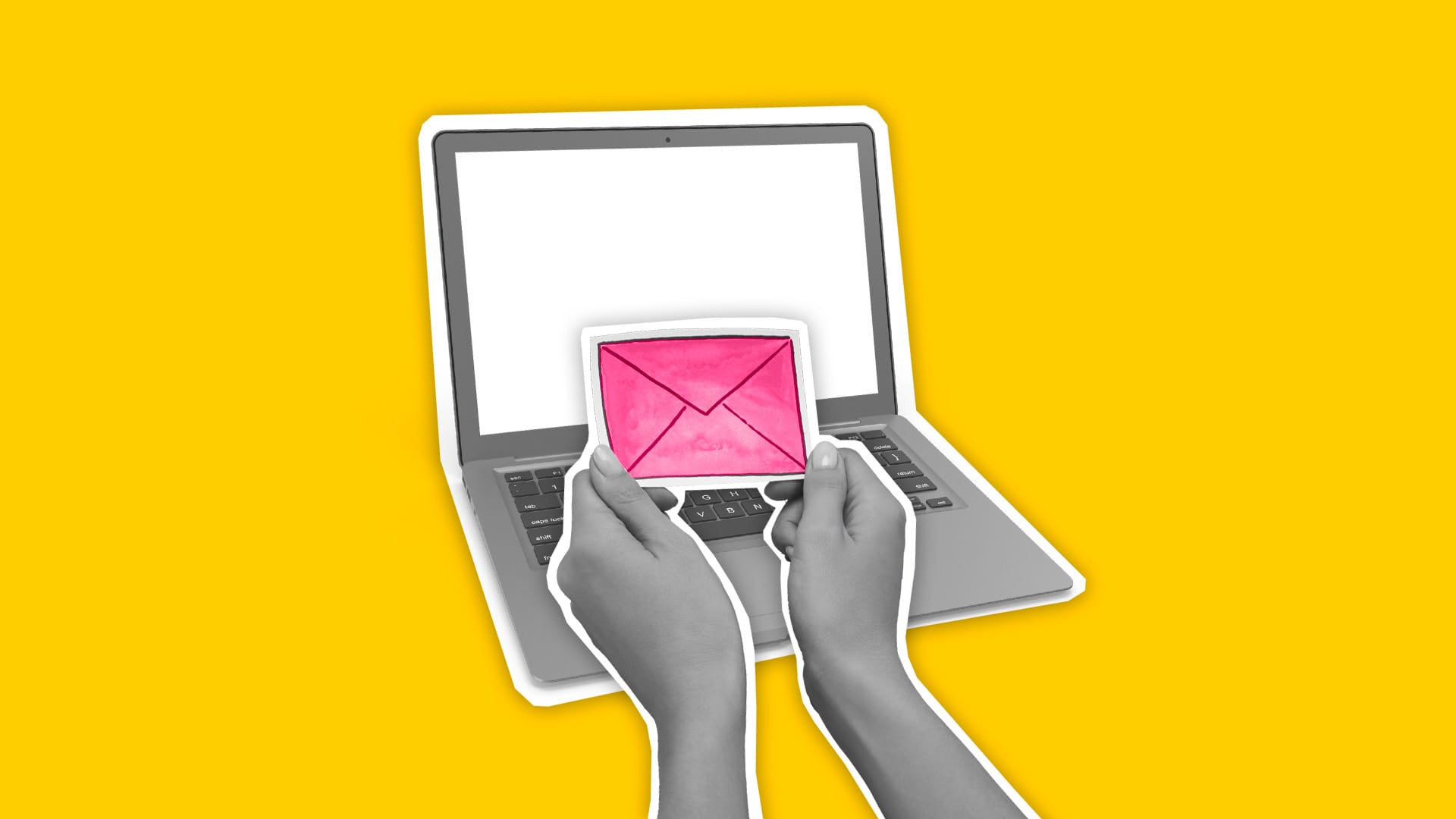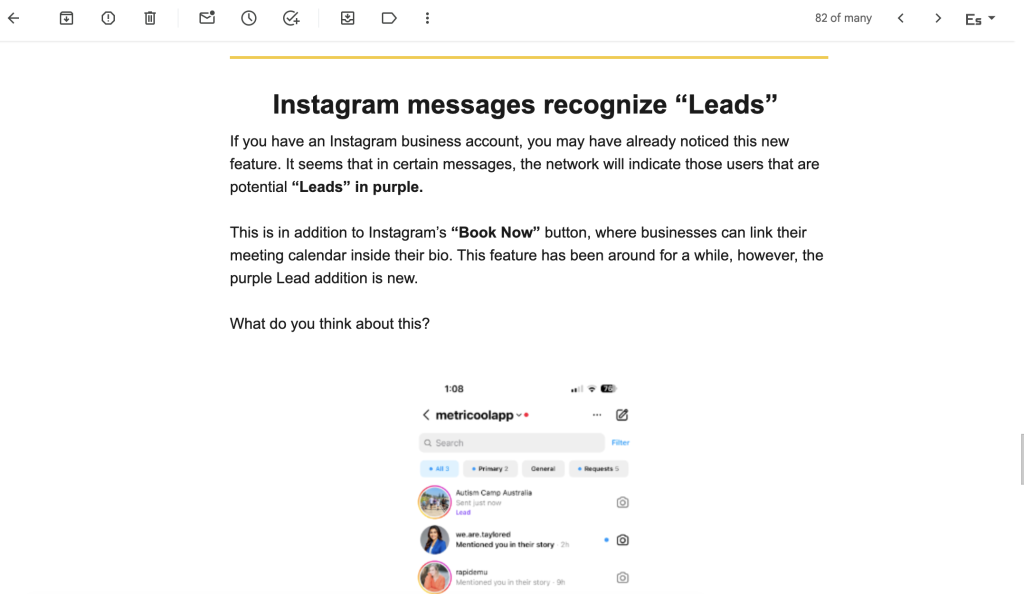9 Best Practices for Email Marketing in 2025

Email marketing remains one of the most powerful tools for businesses to engage their audience, nurture leads, and drive sales. But with inboxes more crowded than ever, how do you ensure your emails stand out and get results?
In this guide, we’ll cover the top email marketing best practices for 2025 to help you craft emails that your audience actually wants to read—and respond to.
1. Have a Solid Email Marketing Strategy
First things first. Before moving forward—and long before writing and hitting ‘send’ on your first email campaign—you need a well-defined strategy. Ask yourself:
- What are my email marketing goals? (Brand awareness, lead nurturing, sales?)
- Who is my target audience?
- What email frequency works best for my current resources and time availability?
- What tools will I use to automate and analyze campaigns?
A strong strategy ensures consistency and helps you align your emails with your broader marketing goals.
📩 Pro tip: Check out our free Email Marketing Strategy Guide to get started.
2. Build and Grow Your Email List
Your email list is one of your most valuable assets. Unlike social media, where algorithms decide what content gets seen, your email list gives you direct access to your audience.
Social media audiences are important capital, but your email list allows for deeper engagement and a more personal touch. It’s the perfect complement to your social content—offering different angles, exclusive content, and direct communication with your subscribers.
How to grow your email list effectively:
- Promote it regularly – Share your newsletter sign-up across all your social platforms with engaging CTAs. Don’t just mention it once—make it a consistent part of your content strategy.
- Use lead magnets – Offer valuable resources like free guides, checklists, templates, or exclusive content in exchange for an email address.
- Optimize your bio links – Use tools like SmartLinks to direct social followers to your sign-up page without losing them in multiple steps.
- Leverage pop-ups and website forms – Capture visitors at key moments with well-timed pop-ups and embedded sign-up forms.
- Run giveaways and contests – Encourage sign-ups by offering incentives while ensuring they align with your brand’s goals.
- Exclusive access – Position your newsletter as a VIP space for behind-the-scenes insights, special offers, or early access to new content.
📩 Pro tip: Always provide a clear value proposition—tell your audience what they’ll get from your emails, the frequency, and why it’s worth signing up.
3. Choose the Right Email Marketing Platform
While choosing the right platform is important, don’t overthink it. If you’ve decided to start growing your email list and sending campaigns, avoid getting stuck in endless research. Most leading platforms offer similar features and are constantly evolving. Instead, focus on their pricing plans—make sure you’re comfortable with the tier you’re starting at, but also with the next levels as your list grows. Selecting a free plan now might seem appealing, but it could lead to expensive upgrades down the road.
A few solid email marketing platform options to consider:
- Kit and beehiiv – Ideal for creators with powerful newsletter tools.
- Acumbamail – Best for small businesses with affordable pricing.
- Klaviyo – Perfect for e-commerce businesses with advanced automation features.
When selecting a platform, consider:
- Ease of use and scalability.
- Integration with your CRM or website.
- Advanced segmentation and automation features.
- Detailed analytics and reporting.
4. Clean and Optimize Your Email List Regularly
When it comes to your email list, remember that bigger isn’t always better. Inactive or disengaged subscribers can hurt your engagement rates, lower deliverability, and even increase the chances of your emails landing in spam.
Regular list maintenance helps you:
- Improve open and click-through rates.
- Avoid spam filters and boost deliverability.
- Reduce bounce rates and maintain a healthy sender reputation.
If someone hasn’t engaged with your emails in a while, the best thing you can do is stop sending to them. Sending emails to disinterested recipients can harm your overall performance. The industry standard for labeling a subscriber as inactive typically ranges from 90 to 120 days of no engagement.
Once a subscriber hits this mark, schedule a “last chance” re-engagement campaign to try and win them back. If they still don’t respond, move them to an inactive segment and exclude them from future campaigns to keep your list clean and focused on engaged subscribers. Most email platforms will allow you to do this with an automatic workflow.
5. Personalize and Segment Your Email List
One-size-fits-all emails are not enough anymore. To truly connect with your audience, personalization, and segmentation are essential. Tailoring your messaging based on subscriber data can significantly increase engagement and conversion rates.
Common segmentation criteria include:
- Customer behavior and purchase history.
- Demographics and location.
- Engagement levels.
For example, if you have a discount pop-up on your website, you can tag subscribers who sign up through it as “interested in deals.” This way, you can send them targeted emails whenever you run a sale—knowing that’s a key motivator for them.
Or, let’s say you offer a budget-friendly fitness meal plan as a free download. You can create a dedicated email campaign focused on meal planning tips tailored specifically for those looking to get fit on a budget. Since they’ve already shown interest in this topic, your emails will resonate more and drive better engagement.
The more relevant your emails are, the better your chances of capturing attention, increasing engagement, and ultimately driving conversions.
6. Keep It Short, Sweet, and To The Point
Your audience’s inbox is packed with emails every day—so respect their time and get straight to the point. To drive results, focus on one clear message per email and make it easy for readers to take action.
If you’re promoting a product on sale, avoid distractions like linking to your latest YouTube video or other unrelated content. A cluttered email can confuse your audience and hurt your conversion rate.
Here are some best practices for email copywriting in 2025 to increase your chances of being opened, read, and acted upon:
- Use short paragraphs and bullet points to improve readability
- Craft a compelling subject line (keep it under 50 characters)
- Ensure a clear call-to-action (CTA) that stands out and drives clicks
📩 Pro tip: Take advantage of A/B testing for subject lines and CTAs to see what resonates best with your audience. Most email platforms offer this feature—use it! Experiment with simple variations like:
Do subject lines perform better with or without emojis?
Is an affirmation more effective than a question?
7. Ask For Feedback
If you’re not sure of what opinions your audience has, or what they want to see, ask! We know that being an authentic brand is extremely important, and along with that means being vulnerable. Remind your audience that you are there to answer their questions, and listen to their feedback.
When you take this feedback and implement it into your future emails or campaigns, these actions will not go unnoticed. This also allows your community to weigh in on conversations, and unique engagement.

8. Smart Retargeting for Higher Email Conversions
Not all prospects will convert the first time—but a strategic retargeting campaign can change that. Use retargeting emails to:
- Follow up on abandoned carts.
- Remind customers about unfinished sign-ups.
- Offer exclusive deals to win them back.
📩 Pro tip: Platforms like Klaviyo can help you set behavioral triggers to send automated follow-ups at the right time.
9. Track Your Email Metrics
I’m sure this will come as no surprise because here at Metricool we love metrics. But, it’s true! So for this last email marketing best practice for 2025, know that tracking your email metrics is extremely important. It will help you gauge how your strategies are working so you can continue to refine these tactics. What are the best email metrics to measure?
- Open rate: This is a no-brainer, and shows the percentage of users who have opened your email. Open rates are one of the most fundamental email marketing metrics and one that you can use to compare data.
- Click-through rate: This metric measures how many readers have clicked on links included in your emails. This is calculated by taking the total number of clicks, or unique clicks, divided by the number of delivered emails, then multiplied by 100. Viewing this data will give you insight into how many are engaging with other content and links.
- Conversion rate: Conversion rates measure how many readers clicked on a link, and made a specific action. For example, if you offered a special Black Friday discount with a link to the offer, conversions would be all those that successfully made it to the point of sale. This is important not only to see how many people are converting, but which users are converting.
- Unsubscribe rate: Although this is a metric we want to keep as low as possible, it’s inevitable that someone will unsubscribe from your emails. However, it’s important to look at this and ensure you don’t have any spikes. But don’t get discouraged. This can be a positive aspect because it will help you fine-tune your email list.
- List growth rate: Of course, growing is always the goal, right? You can find this by taking the number of new subscribers minus the number of unsubscribers, and then dividing that by the total number of contacts, and multiplying that number by 100. Analyze this to see how your email list is growing over time.
We know that email marketing can be a heavy task, but you don’t need to overcomplicate the process. If you’re starting from the beginning, keep it simple and use these email marketing best practices in 2025 to grow your list over time.
Since we mentioned newsletters, you can sign up for our very own weekly newsletter, which is sent out every Sunday. A short and sweet 3-minute email with tips, trends, content ideas and the top social media news of the week 💌

